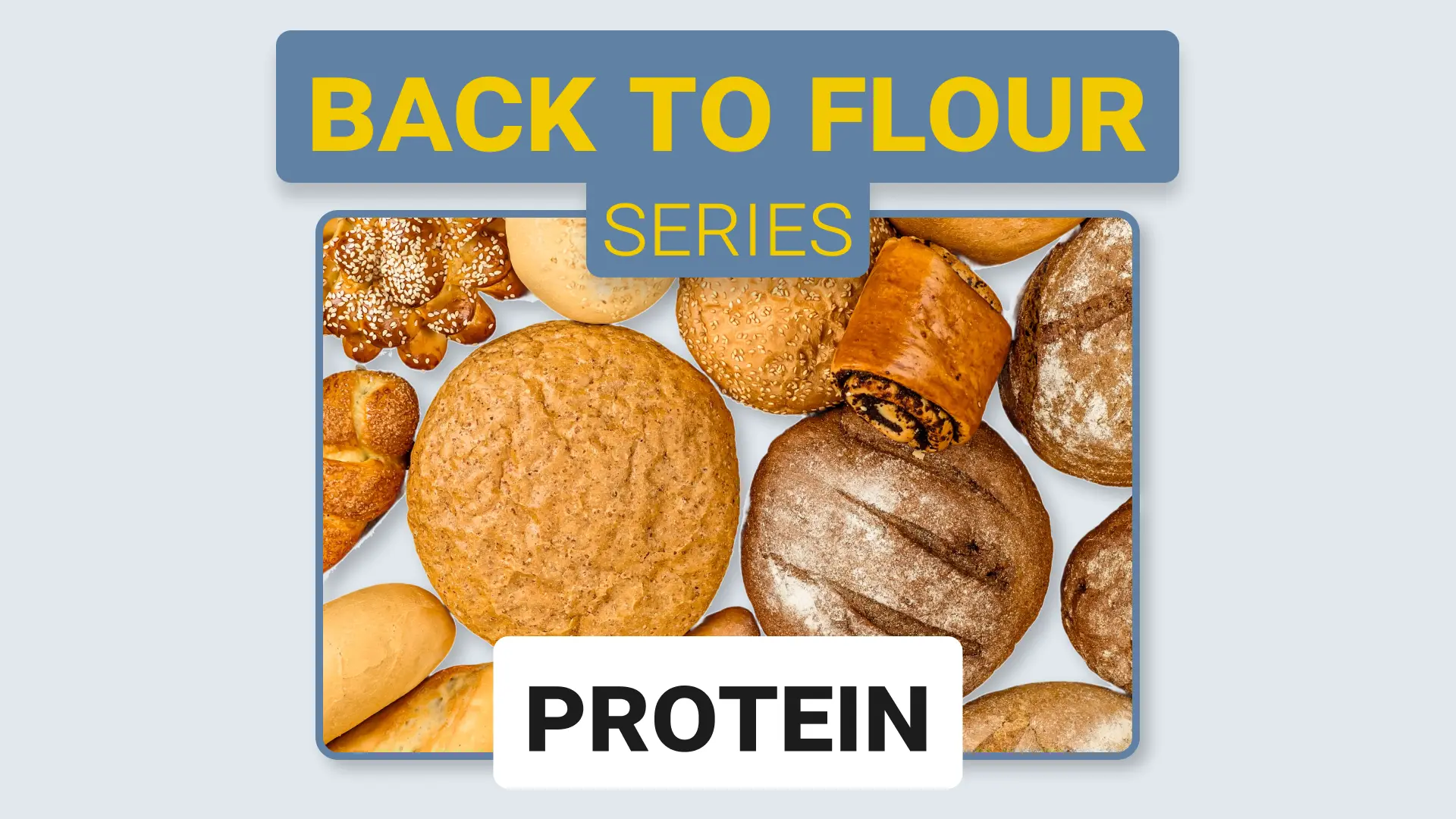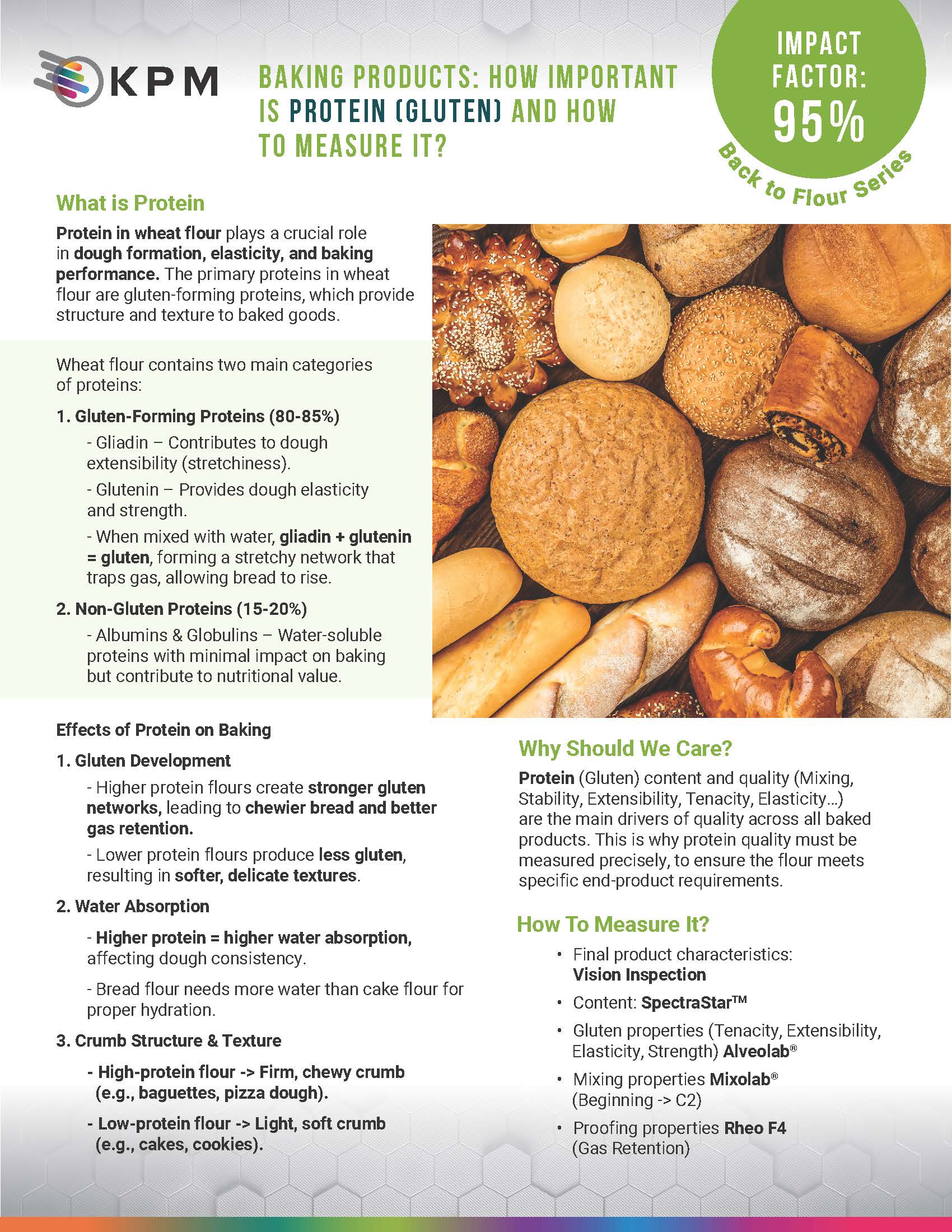Protein: The Foundation of Dough Strength and Baking Performance

Why Protein Matters
Protein (more specifically gluten-forming proteins) is what makes wheat flour unique. As highlighted in the video, gluten is the only cereal protein capable of forming a coherent, extensible film when mixed with water, allowing dough to develop. This viscoelastic behaviour defines the dough’s ability to stretch without tearing, retain gas during proofing, and set into a stable structure during baking.
Because gluten influences mixing, water absorption, proofing capacity, gas retention, texture, and final volume, protein is one of the most impactful flour components. Gluten-free formulations illustrate this perfectly: removing gluten removes the primary structural driver of dough performance.
Secrets of Flour – Explore the Keys to Protein
The Back to Flour video shows how protein quality affects the key mechanisms behind dough formation and baked product performance. Gluten provides both tenacity (strength) and extensibility (stretchability), giving dough its characteristic viscoelasticity.
Throughout the process:
- During mixing, stronger gluten increases dough firmness, water absorption, and stability.
- During proofing, gluten retention determines how much gas the dough can hold, directly influencing loaf volume.
- During baking, gluten interacts with starch to set the structure and support final texture.
To assess protein content and quality, several analytical tools are demonstrated:
- SpectraStar™ – measures protein content in seconds.
- Alveolab® – evaluates tenacity, extensibility, elasticity and baking strength through the bubble test.
- Mixolab® – tracks dough consistency, development, stability, and thermal weakening.
- Rheo F4 – measures gas production and gas retention, key indicators of proofing behaviour.
Together, these measurements provide a complete picture of how protein drives dough performance and final product characteristics.
For a Quick Overview of Protein
Our PDF guide offers a concise technical summary of the influence of protein on dough rheology, water absorption, viscoelasticity, proofing behaviour, thermal resistance, and final structure.
📄 Download the PDF: Baking products: How important is protein, gluten, and how to measure it?

What’s Next
This episode is part of the Secrets of Flour journey, which step by step reveals how flour’s hidden components influence bakery performance.
The Back to Flour series is constantly growing—with videos, technical PDFs, and resources across At the Table, Transformation of Dough, Secrets of Flour, and more technical insights to come.
Explore the categories below and stay tuned as we continue to connect flour functionality with product excellence.
Other Posts in the Series
Related Blog Posts

















